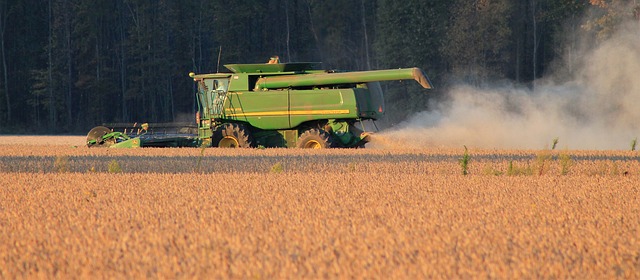April 1, 2019
ECB Group, the holding company of Brazilian biofuel entrepreneur Erasmo Carlos Battistella, will be embarking upon an $800 million project to build an industrial facility to produce renewable diesel and renewable kerosene in Paraguay.
The project, which was announced by Battistella during his presentation at Global AgInvesting 2019 in New York, and which will proceed under the name Omega Green, represents the largest private investment in Paraguay’s history. Battistella met with Paraguayan President, Mario Abdo Benitez, at the Palacio de los López on February 25 of this year, where both parties signed a memorandum of understanding (MOU) allowing for development of Omega Green.
“Today is a very important day,” said Battistella. “We conclude the feasibility studies of Omega Green and go to the second phase, the stage of the executive project. We want to start the works still in 2019.”
The project will also be a first-of-its-kind second generation biofuels plant in the Southern Hemisphere, with a per-day capacity of 16,500 barrels of Hydrotreated Vegetable Oil (HVO) and Synthetic Paraffinic Kerosene (SPK) made from soybean oil that has been extracted using renewable hexane, used cooking oil, and animal fats.
The facility will itself be completely fueled by renewable energy, with the hydrogen needed for its renewable diesel hydrotreatment operations generated through a process based on the electrolysis of water. Its systems will include steam generation from biomass, and waste and byproduct treatment.
The processing design and equipment for soybean processing will be supplied by Crown Iron Works, and a modular hydrotreatment plant will be supplied by Honeywell’s UOP, according to Biodiesel Magazine.
“Our goal is to have the most clean and renewable biofuel production possible, unique in the world, certified by the most rigorous international quality and sustainability criteria,” said Battistella.
The facility will be located on the Paraguay River, with a port and terminal on-site, as nearly all of its output will be exported to countries that are signatories on the Paris Agreement, for use as civil and military aviation fuel, and to markets that need to rapidly reduce greenhouse gas emissions, such as the EU and the U.S., which has committed to reducing emissions by up to 28 percent by 2025.
It appears that timing is lining up on both sides of the trade equation. The ability to use an ever-widening range of organic materials is giving strength to the industry, according to Vista Projects. And not only has the U.S. military been conducting trials of renewable jet fuels for years, but only days ago, jet developer Aerion Corp announced it is designing its first plane that will operate solely on biofuels. Furthermore, at the beginning of March, the Port of Seattle in Washington State assembled its inaugural Washington Sustainable Aviation Fuels Summit to explore ways to shift aviation away from fossil fuels to improve its environmental footprint.
At the same time, the EU Commission formally banned biofuels made from palm oil, due to its contribution to deforestation and environmental impact, opening the market for cleaner renewable fuel options.
“We have a goal of getting 10 percent of these sustainable aviation fuels to Sea-Tac in 10 years,” said Fred Felleman, commissioner of the Port of Seattle. “That’s an enormous amount of fuel, that’s 80 million gallons. We’re not going to achieve that overnight, but we’re going to send a clear market signal that if folks want to get involved, this is the time to do it.”
As early as 2007 Paraguay was issuing plans with the goal of becoming a major biofuels exporter to top global markets. Battistella chose Paraguay for its abundant supply of water and raw materials suitable for renewable energy production, and its availability of cheap energy.
In 2007, when the country set its initial goals for renewable fuel exports, it had an arable land base of 21.5 million hectares, of which only 3.1 million hectares, or 14.5 percent were being farmed. In addition, 65 percent of the country’s land area was savannas, grasslands, and drylands suitable for energy crop production.
“It is a country with a significant supply of energy and water for hydrogen production, growth potential of the soybean crop, supply of other raw materials for biofuels and a very favorable business and logistics environment,” said Battistella.
The development of the project is expected to take 30 months, and the facility is expected to be fully online by 2022. Once complete, it is expected to add $8 billion to Paraguay’s estimated GDP over 10 years; create 3,000 jobs during construction and 2,400 direct and indirect jobs during operation; and benefit 10,000 smallholders due to the increased demand for soybeans.
-Lynda Kiernan

Let GAI News inform your engagement in the agriculture sector.
GAI News provides crucial and timely news and insight to help you stay ahead of critical agricultural trends through free delivery of two weekly newsletters, Ag Investing Weekly and AgTech Intel.




